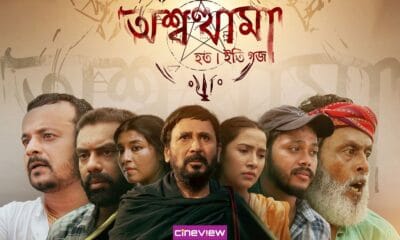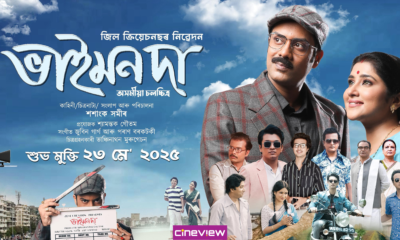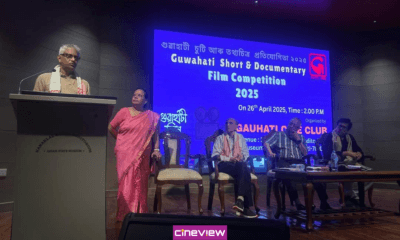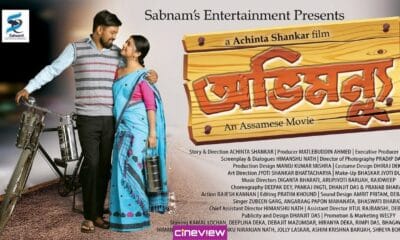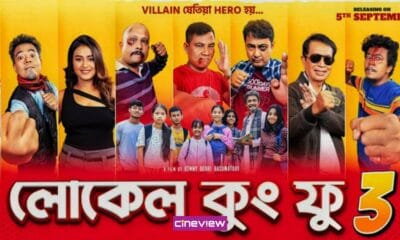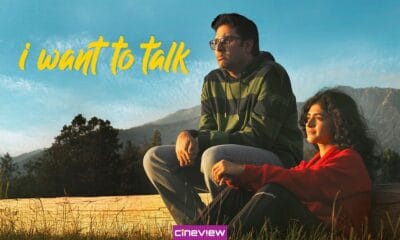Film Reviews
Sundarpur Chaos or Chaos in Director’s Vision
The film Sundarpur Chaos begins on a sombre note but loses everything it needed along the way.
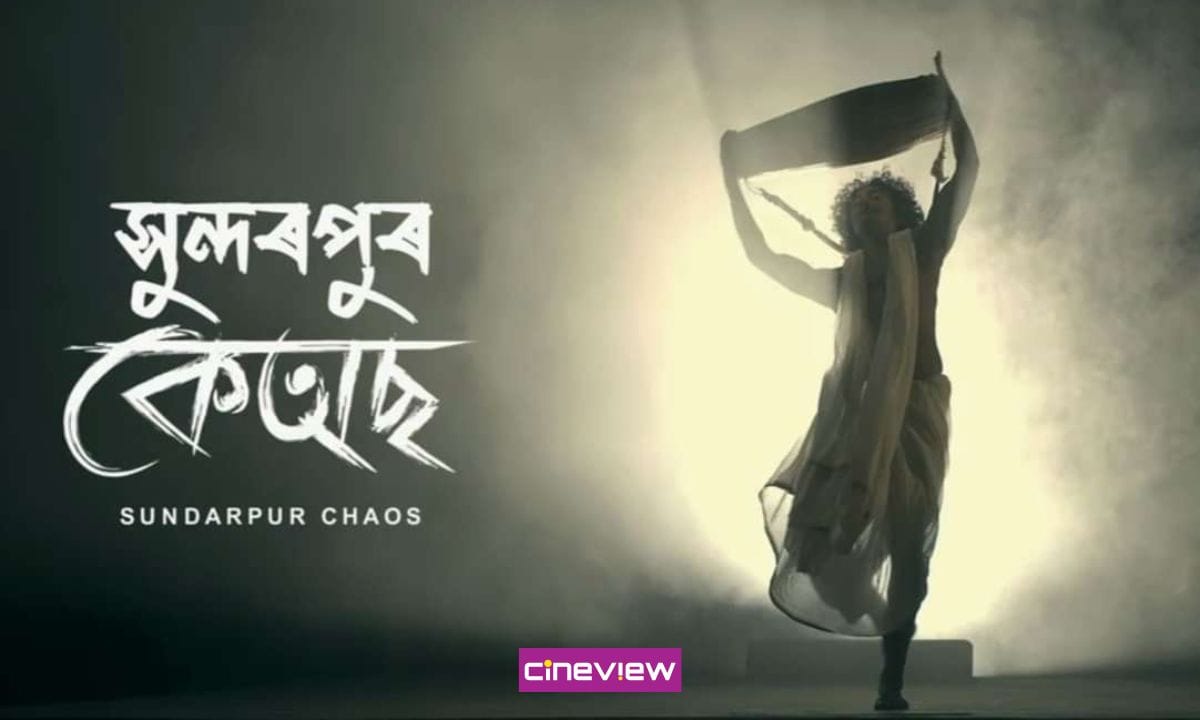
Jhulan Krishna Mahanta’s Sundarpur Chaos is a very sour, unpleasant slog, making it hard to understand why the story was moulded this way and for whom it was made. The film begins on a sombre note, with pleasing shots and a story about a family, a young man in particular, that initially shows potential for exploration. But, it loses everything along the way, whether in terms of narrative pace, rhythm, coherence, performance, or tone.
The story begins in a village, where Kingkor, a young man, is trying to figure out life alongside his friends. After an incident, his parents force him to go to Guwahati for further studies, where a new narrative takes shape. He meets a tribal woman with whom he forms a close bond. This connection makes him question his ties to Sattra culture, which expects him to marry within his caste. Suddenly, he returns home due to an emergency and eventually becomes the youth leader of the region and the film ends with him giving a speech.
The film has been promoted, and at the beginning, a disclaimer has been put stating that the film deals with the issue of illegal immigrants. However, Mahanta chooses to beat around the bush, avoiding a direct exploration of the theme. The topic comes up abruptly when Kingkor and his friends lose their gym equipment. While searching, they come across a place with new houses. Kingkor, without any buildup, questions who owns these houses and starts attacking the people there. In the next scene, he is blamed for burning the houses down. Shortly after, he is sent to Guwahati for further studies.
The issue lies in how the storyline has been treated by the writer-director. The story is not given enough time to develop; instead, the film jumps from one issue to another. It felt as if Mahanta himself wasn’t clear about what to show in the first half. Though the film begins with some promising scenes, after a while, it seems like the scenes are just there without any clear objective. Up until the forty minutes, the audience only sees Kingkor and his mundane life. There’s nothing wrong with showing mundane life—I believe it can offer more to cinema than anything else, as long as it’s justified. In this film, it wasn’t. After forty minutes, a sudden, forceful tension escalates with the introduction of the theme of illegal immigrants and the houses that Kingkor sees.
Then, suddenly, the narrative shifts to a new location, where the protagonist meets a tribal woman, named Sanghamitra, with whom he spends time. Their relationship begins as fellow dancers and friends, but then a romantic song is introduced, shot in a very fancy location, highlighting their newfound love for each other. When the song begins, one can immediately feel how disconnected it is from the storyline and the previous scenes. It overtly feels like the song was added after the film was completed, as an afterthought, which didn’t work in favour of the film. The connection between the two characters was not developed carefully, and as a result, the romantic angle feels forced, failing to convey the essence of romance between the protagonists. Mahanta should have realized that simply showing a romantic song in a fancy location isn’t enough to create that essence.
The editing of the film also needed more attention. Some shots are unnecessarily long and feel very slow, while certain important scenes seem rushed. The film abruptly cuts between dialogues, the flashbacks are ambiguous, and it is difficult to understand how those flashbacks coherently fit into the narrative. Towards the end, the scenes are cut so rapidly that it becomes unclear why these quick transitions are happening. The scenes appear to be there without much sense or without leading to the next. I believe Mahanta’s decision to edit the film himself is part of the problem. Without an editor to offer a different perspective, the film ends up feeling more like a director’s cut.
While the performances of the lead actors, like Jolly Laskar, Rajeev Goswami, and Arun Nath were commendable, Partha Pratim Hazarika’s performance, though interesting at times, felt mismatched in terms of the character’s age and body language. Partha appeared older than what the character required. The character of Miki, played by Bonny Deori, seemed to be introduced for comic relief, but it fell flat. It struck me that Bonny, known for comedy, didn’t work here. Perhaps an actor can’t be funny or comical on their own unless the director has a sense of humour to guide them.
The film, with “Chaos” in its title, reflects the chaos in the clarity of its thought. Mahanta should have hired a writer and an editor to provide a fresh perspective on the narrative. The final product needed more revisions. It wasn’t ready to be released in theatres, but it seems there was a rush from Mahanta to appease someone in power by incorporating a narrative that doesn’t appear to be the film’s core focus.

 Film Reviews10 months ago
Film Reviews10 months agoJoy Hanu Man: The Hero Amongst Us

 Film Reviews1 year ago
Film Reviews1 year agoBidurbhai’s Shocking Caricature of Queers: Painful but Not Surprising

 Film Reviews12 months ago
Film Reviews12 months agoLocal Kung Fu 3: Is Assamese Comedy Evolving?

 Film Reviews1 year ago
Film Reviews1 year agoBasumatary’s Jiya is a Beacon of Hope for Assamese Cinema

 Film Reviews11 months ago
Film Reviews11 months agoFor Assamese cinema to flourish, movies like Sikaar are necessary

 Film Reviews11 months ago
Film Reviews11 months agoBhoot Jolokiya: Just like the chili, the movie too lingers long after it’s over

 Film Reviews8 months ago
Film Reviews8 months agoI Want to Talk: It’ll Grow on You, Slowly but Surely

 Film Reviews9 months ago
Film Reviews9 months agoAbhimanyu: Questioning the system, one frame at a time


